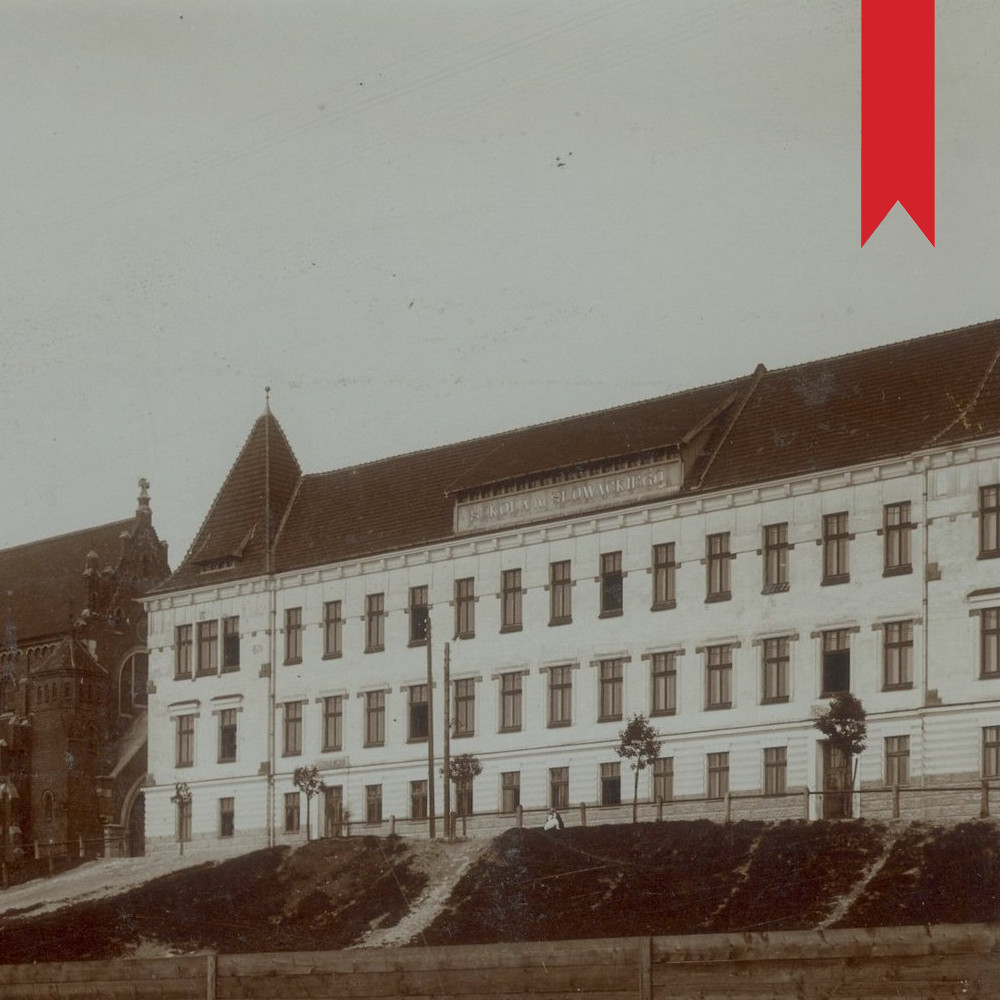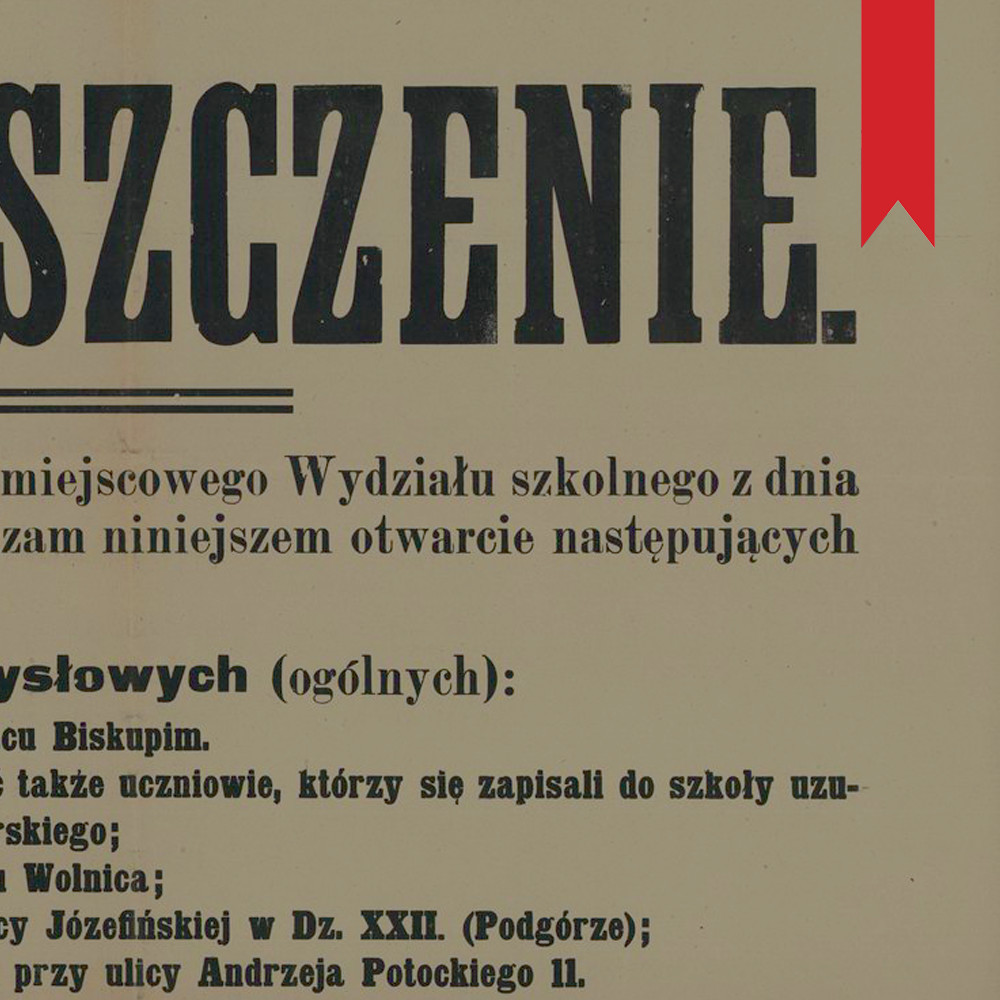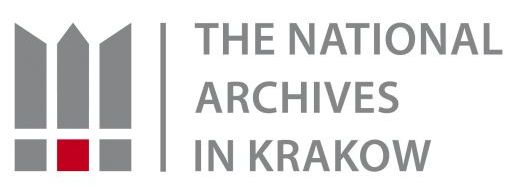A MODERN TOWN
From the events of the Royal Free Town of Podgórze 1784–1915
Emperor Joseph II, while granting Podgórze the status of town, set the condition of building a school. In 1788, a 3-class co-educational elementary school opened, with rooms in private homes being adapted for educational purposes, including the halls of the former inn at 13 Limanowskiego Street. The main school building was only constructed in 1881.
In the “na Darwarze” building on Mickiewicza Street (currently Zamoyskiego 4/6) comprehensive school and secondary school pupils received an education. The establishment of the Podgórze middle schools was a response to the over-crowding of the three existing schools in Kraków. In 1892 a secondary school with a classic profile was opened, where besides Latin and Greek, particular attention was paid to the physical development of the pupils. Cycling, football, shooting and scouting were all encouraged. In 1892, boys from the folk school were transferred to the newly-built main building at 13 Sokolska Street, designed by Józef Kryłowski, creating the Tadeusz Kościuszko Male School.
Separated in 1872, the school for girls received its own building in 1896. The main building in Krzemionki, at Szkolna Street (currently Kpt. Potebni), held the 4-class Henryk Sienkiewicz Girls School as well as a departmental school. In 1913, the educational centre was equipped with a two-stove kitchen, in which the oldest pupils had lessons in housekeeping. For the cooking lessons, the girls paid a monthly fee of 3 korons, designated for the purchase of food articles. Some of the amount was subsidised by the school, and the rest was obtained from private donors.
Besides the local pupils, the schools in Podgórze were also attended by children from the villages nearby. In order to give them access to education, the number of branches was increased and new centres were organized.
The owners of the Zieliński-Bilski company funded the third school building located at Lwowska Street (currently Limanowskiego 60/62) in the former quarry. The main building of “Under Benedict”, designed by Zygmunt Luks and opened on 12 September 1904, held the 4-class Jan Matejko Boys School and the 4-class Zofia Chrzanowska Girls School. The area of the quarry was shaped into a huge square used for games and gymnastic activities.
On Mickiewicza Street (currently 58 Zamoyskiego Street), next to the Church of Our Mother of Perpetual Help, in 1911 the fourth building was constructed, designated as a headquarters of the Juliusz Słowacki Female Departmental School.
In a rented townhouse at 10 Józefińska Street there were two 3-class schools: industrial (established in 1891) and merchant (established in 1911), with part-time studies. Laws concerning industry forced employers to send their employees for education. Among the craftsmen, the most common were iron-workers and shoemakers. The schools had a library as well as a meeting club, where the pupils listened to lectures, sang patriotic-religious songs, and participated in trips and social games.
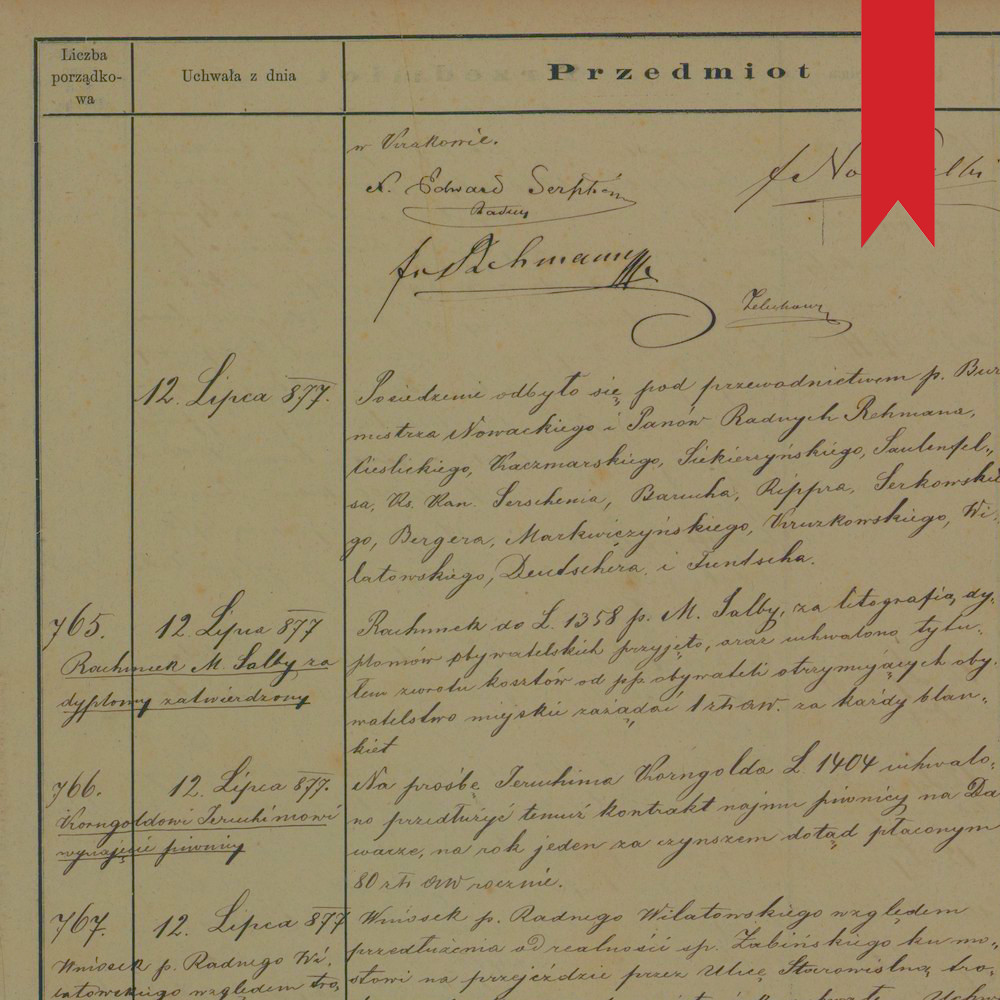
Act of Podgórze Borough Council from 12 July 1877 concerning the designation of “Darwarówki” for the construction of boys and girls schools
(ANK, ref. no. 29/53/6, p. 157, pos. 769)
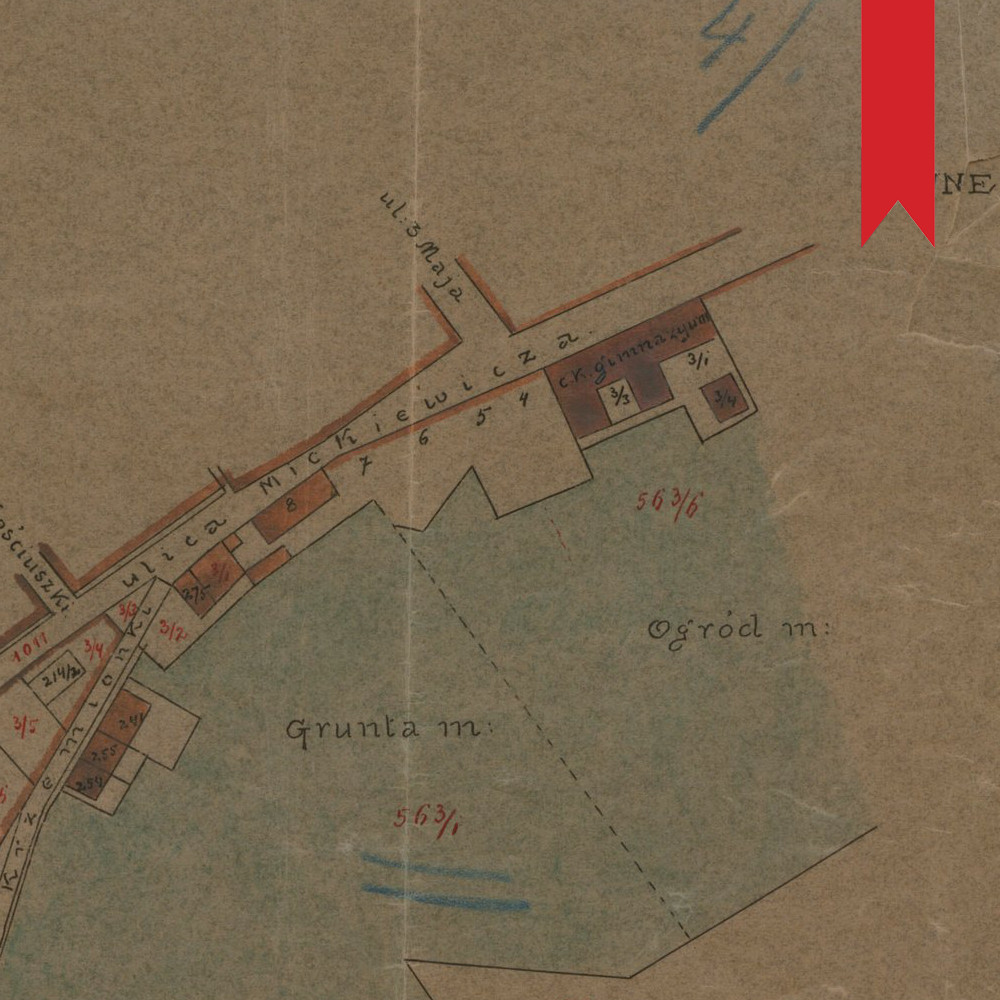
Plan of the building for the secondary school in Podgórze
(ANK, ref. no. Kr 7194, p. 895)
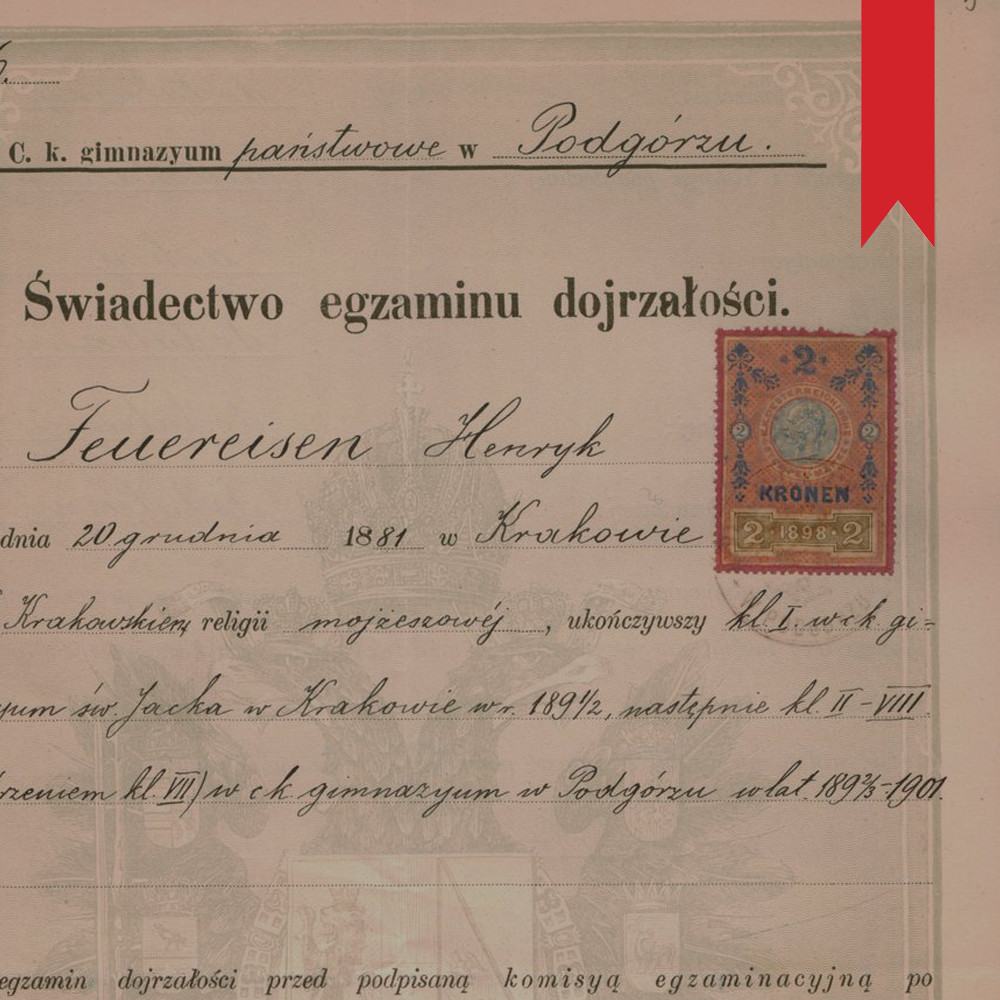
Certificate from the state secondary school final exams in Podgórze
(ANK, ref. no. 29/1433/265, pp. 5–6)

Building at 13 Sokolska Street, headquarters of the Tadeusz Kościuszko Male School, later the departmental school
(ANK, ref. no. A-IV-695)
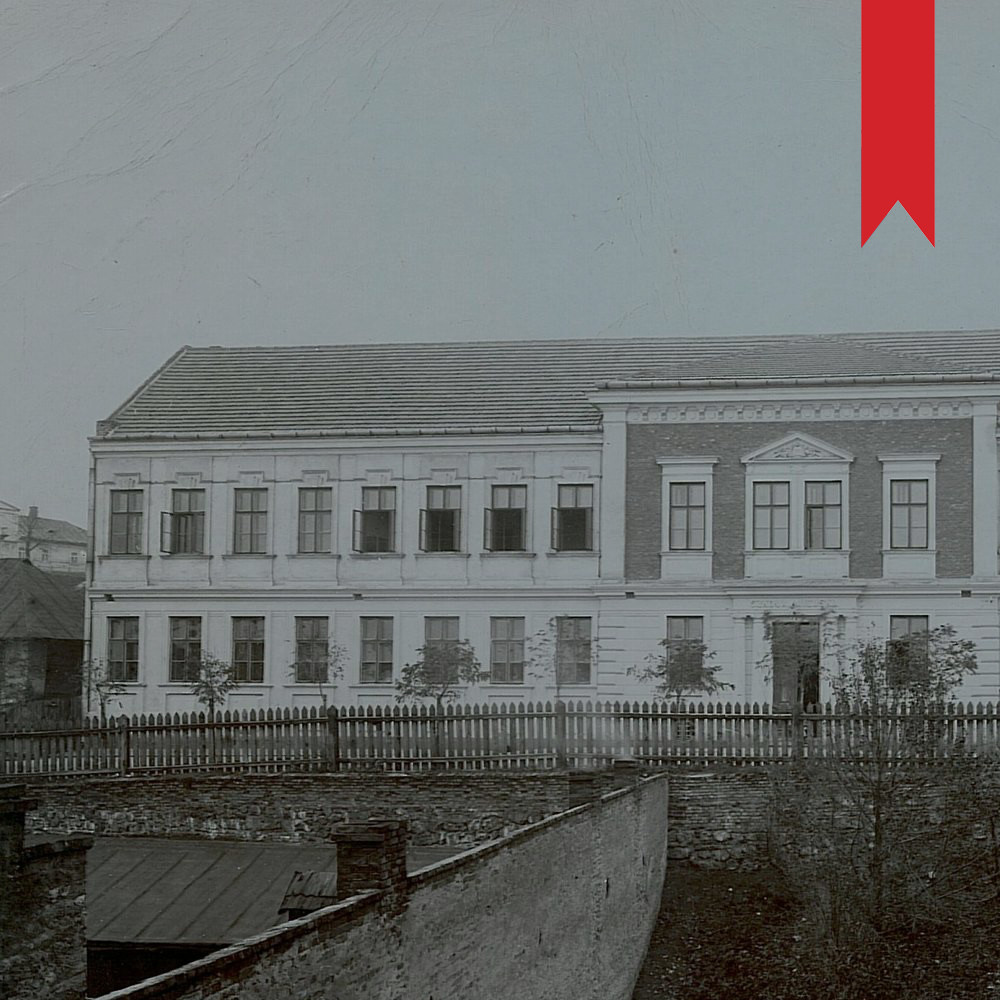
Building of the 4-class Henryk Sienkiewicz Girls School at Szkolna Street
(ANK, ref. no. MI-7/15)
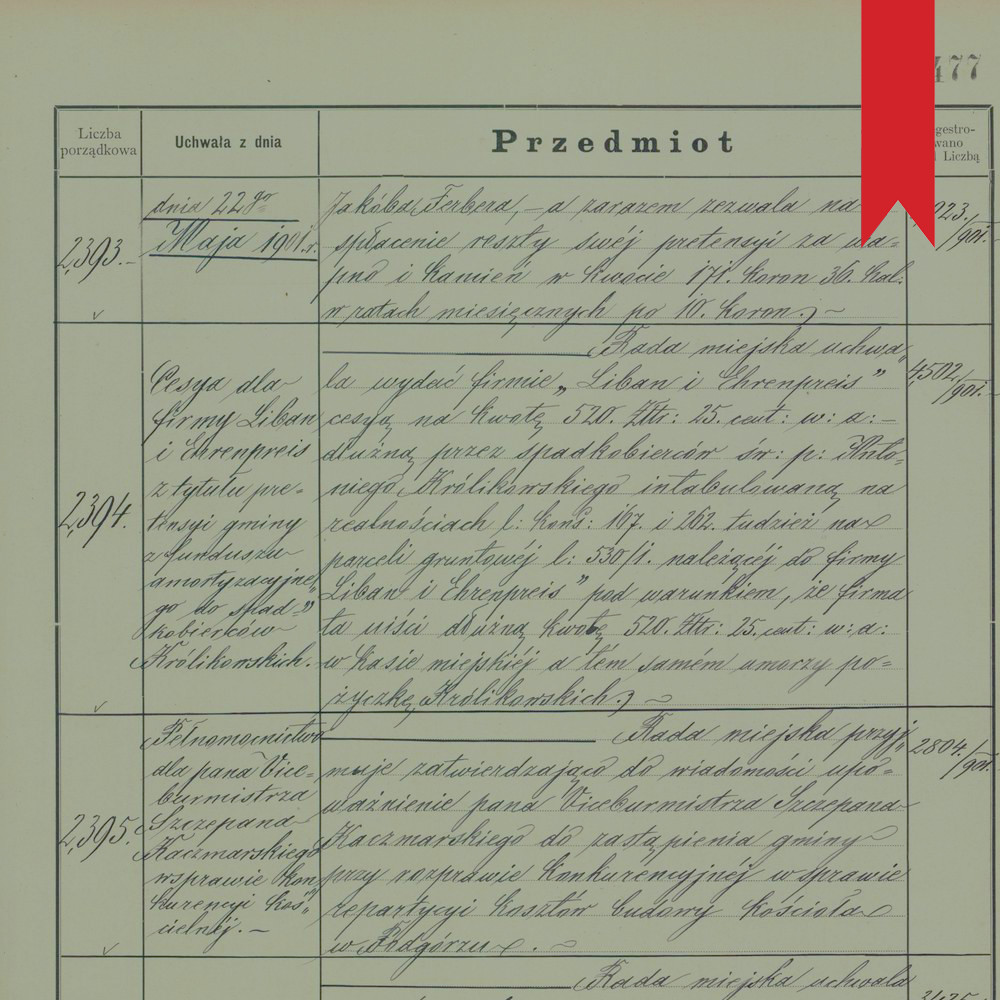
Act of Podgórze Town Council from 22 May 1901 granting the name to Podgórze's folk school
(ANK, ref. no. 29/53/8, p. 477, pos. 2396)

Building of the school “Under Benedict”
(ANK, ref. no. A-IV-696)
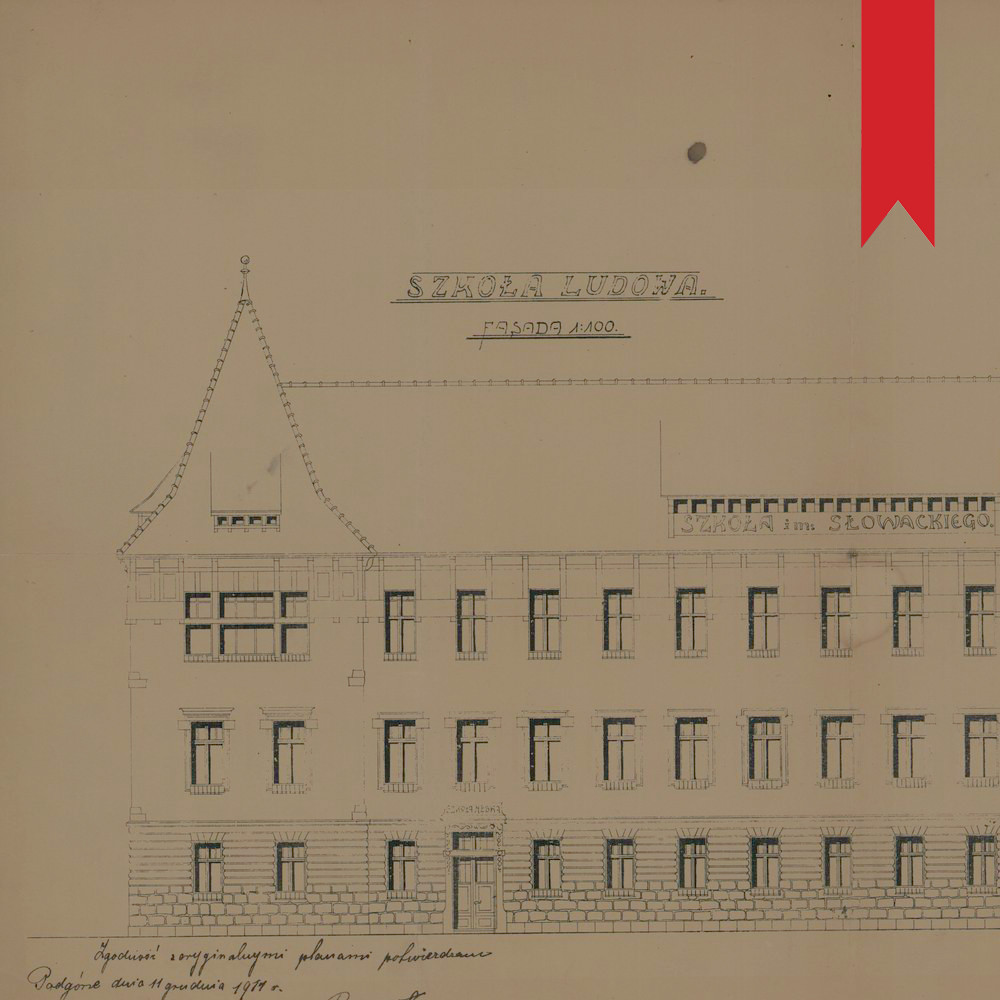
Design of the facade of the J. Słowacki Folk School from 1911
(ANK, ref. no. 29/53/960, p. 2775)
